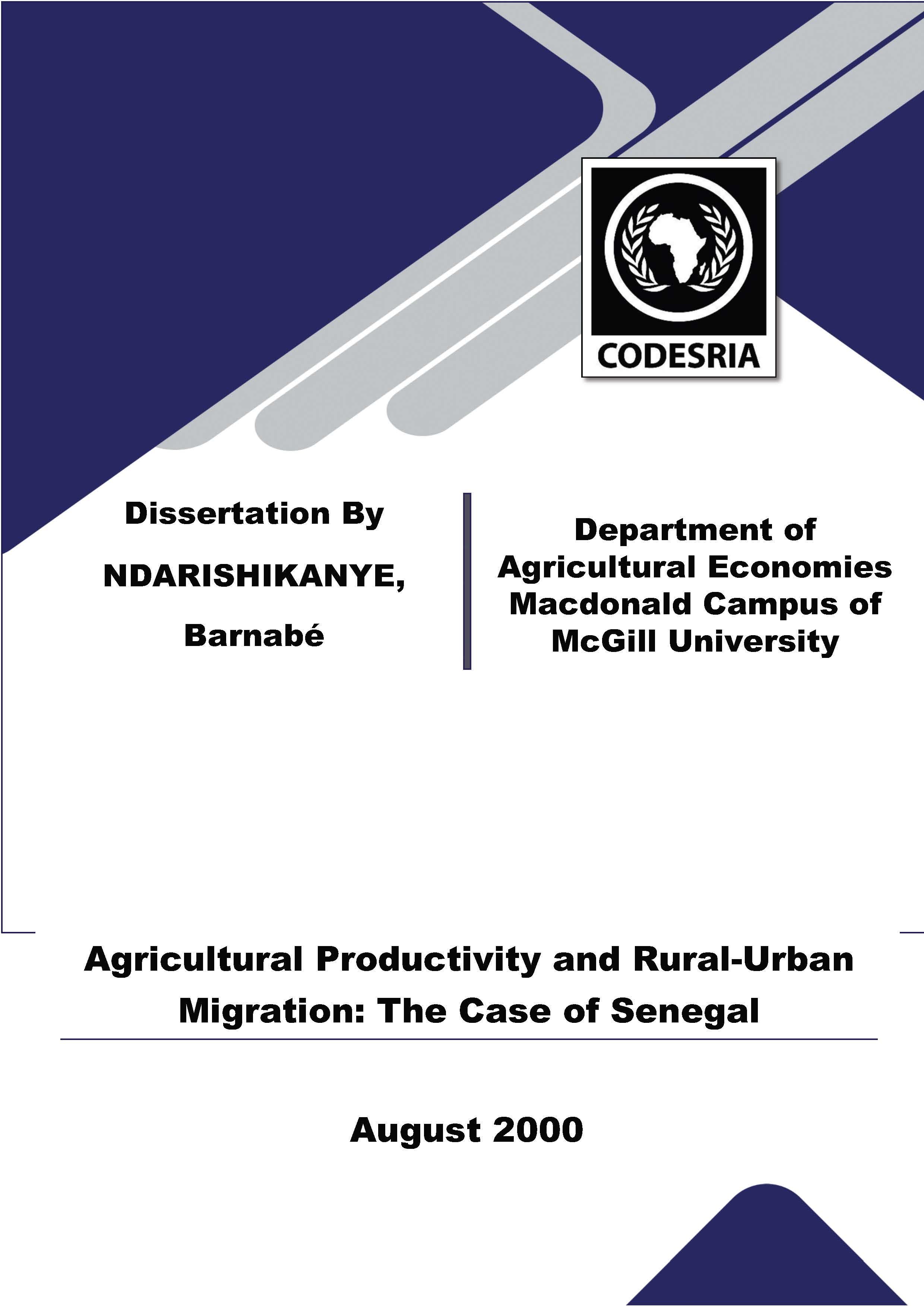Agricultural Productivity and Rural-Urban Migration: The Case of Senegal
Keywords:
Agricultural Productivity, Rural-Urban, Migration, SenegalSynopsis
Rural-urban migration in Sub-Saharan African c9untries has been increasing since the 1960s. ln Senegal, it has been growing at a rate of 7 % per year from 1961 to 1996. The labour market in the modem industrial and service sectors is so depressed that urban workers face high rates of unemployment and poverty and live in hard conditions in the fringe urban sector. This study was aimed at examining policies to reduce rural-urban migration using selected agricultural investments.
Based on a recursive system of equations,. rural-urban migration elasticities from agricultural inputs were estimated. The model combined a CobbDouglas agricultural production equation and rural-urban migration equation which has the agricultural output as an explanatory variable. The period of study is 36 years, from 1961 to 1996.
The findings support hypothesis that rural-urban migration is a positive function of the urban-rural wage ratio, proxied by the ratio of the urban per capita incarne to the rural per capita incarne. lt al~o justifies the foundation of a policy aimed at reducing rural-urban migration flows by increasing per capita earnings.
by means of increased agricultural investments. The .results show that 1 % increase of fertiliser and infrastructure capital will increase agricultural output by 0.2 % or 0.28. % respectively, which lowers rural-urban migration by 2 % in the case of fertiliser and 3.2 % in the other case. If we can extrapolate these results, fertiliser and infrastructure need to be increased respectively by 36 % and 32 % to reduce rural-urban migration to 2 %, the level of industrial labour demand.
Downloads






